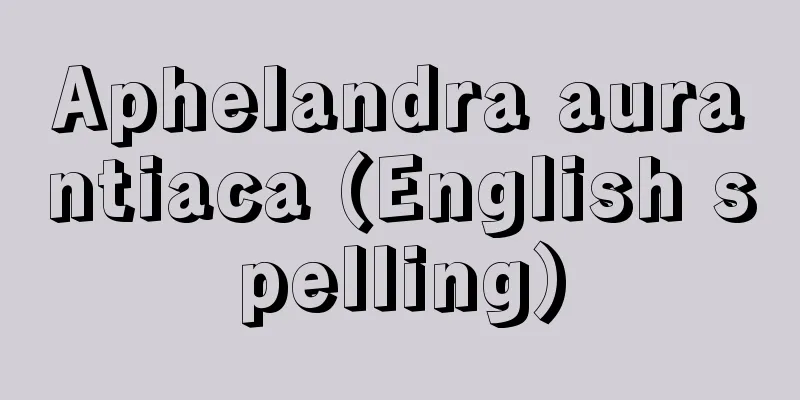Song-play - Utaawase

|
A literary group competition in which each team is paired up (called a "ketsuban") to write poems on a set theme (a common theme or a "sokutai"), and then compared to each other to determine their superiority or inferiority. The results are then combined to determine the winner of each team, "left" and "right." The sentimental public and private lives of the imperial aristocracy saw the flourishing of various recreational and competitive games, and "monoawase" (kusaawase, senzaiawase, mushiawase, etc.) were born from imitation of the Chinese poetry and grass-fighting games. The poems (composed on the subject of the object) that accompanied these matches began to be matched with each other, and so utaawase was born. The oldest surviving utaawase is said to be the "Zaiminbu no Kyoyukihira no Ie no Utaawase" from the late 9th century, but at that time there was no clear distinction between monoawase and utaawase, and they were held as entertainment for Shinto and Buddhist ceremonies at banquets following festivals and moon-viewing. Therefore, the methods and events for the poetry contest were also adapted to these ceremonies, with many of the congregants becoming Katodo (people who judged the superiority or inferiority of the other), and the poems from both sides were recited alternately by Tokuji (people who organized the poems and handed them over to the Kouji) and the Kouji (people who read the poems aloud), and the judging was done by a friendly consensus between the Katodo and the Kouji (people who judged the poems). As the sense of competition grew stronger, a specific judge (Hanja) was needed, and at first the person hosting the banquet (the Emperor, powerful families, etc.) or their representative judged the results, but as the arguments became more intense and poetry theories were used to help with the judging, professional poets came to be selected as judges and Katodo. Generally speaking, the period represented by the "Dairi Utaawase" in 960 (Tentoku 4) was a pleasure poetry contest centered on ladies-in-waiting from the Imperial Palace and the Imperial Harem. From the "Midō Shichiban Utaawase" in 1003 (Chōhō 5) to the "Jōyaku Dairi Utaawase" (1078), the poetry contests were purely contests of poetry, even though they took the form of a pleasure contest accompanied by music, and the content of the poetry contests was centered on the poets. From then until the end of the Heian period, famous poets such as Minamoto no Tsunenobu, Toshiyori, Fujiwara no Mototoshi, Akisue, Akisuke, and Kiyosuke became the authors and judges, and only the quality of the poems and the standards of the debate were contested, and the meaning of the pleasure contest was completely lost. At the same time, the number of contests increased, and new forms of criticism such as two-person contest and follow-up contest were born. In the Kamakura period, it became a pure forum for the study and theory of waka poetry, as represented by the Mikohidari (Shunzei, Teika) and Rokujo (Kensho, Suetsune) schools of thought, and also a stage for the new trends in literature seen in the Shin Kokin period. On the other hand, as the popularity of 100-poem poetry grew, the "100-poem poetry contests" were born, in which 100 poems were competed against each other, and large-scale poetry contests were established in which opponents were selected over time and the contest was judged by multiple judges. Examples of this are the "600-poem poetry contest" (judged by Shunzei) and the "1,500-poem poetry contest" (judged by Shunzei and 10 others). After that, the waka world became entirely the sole stage of the Mikohidari sub-school (Nijo). Although there were times when the anti-Mikohidari school of Fujiwara Mitsutoshi and others, or the anti-Nijo school of Kyogoku Tamekane and others, offered fresh ideas in both waka and criticism, the waka contests peaked in the early Kamakura period and continued unnoticed until the Edo period as a customary literary style. In addition, there are other forms of contests such as "senkaawase" (selected poem contests), in which excellent poems are selected and contested, "jikaawase" (personal poem contests), in which poems by specific individuals are contested, "shiikaawase" (poetry contests), in which waka and Chinese poetry are contested, and "monogatariawase" (monogatari contests), in which waka from popular stories are contested. [Fumio Hashimoto] "Iwatzu Sukeo, 'A Study of the History of the Theory of Poetry Contests' (1963, Waseda University Press)" ▽ "Hagiya Boku and Taniyama Shigeru, 'Japanese Classical Literature Series 74, Poetry Contests' (1965, Iwanami Shoten)" ▽ "Hagiya Boku, 'The Complete Heian Period Poetry Contests', 10 volumes (1979, Dohosha Publishing)" Source: Shogakukan Encyclopedia Nipponica About Encyclopedia Nipponica Information | Legend |
|
決められた歌題(兼題、即題)で詠んだ歌を一組ずつ番(つが)え(結番(けつばん))、互いに比較して優劣を決め、それを総合して「左」「右」各方(かた)の勝負を争う文芸的な集団競技。 王朝貴族の情趣的な公私の生活は、さまざまの遊宴競技を盛んにしたが、中国の闘詩、闘草の模倣から「物合(ものあわせ)」(草合、前栽(せんざい)合、虫合など)が生まれた。その合わせた物に添えられた歌(その物を題にして詠む)が、互いに合わせられるようになり歌合が成立した。現存最古の歌合は9世紀末の『在民部卿行平家歌合(ざいみんぶのきょうゆきひらのいえのうたあわせ)』といわれるが、このころは物合と歌合は明確に区分されず、節日(せちにち)、観月などの後宴に、神事、仏事の余興として催された。したがって、歌合の方式、行事もこれらの式次第が準用され、会衆の多くが方人(かとうど)(優劣の難陳(なんちん)をする人)となり、読師(とくじ)(歌を整理して講師(こうじ)に渡す人)、講師(歌を読みあげる人)によって左右の歌が交互に披講され、判定も和やかな左右の方人の合議によった(衆議判(しゅうぎばん))。勝負意識が強くなると、特定の判者(はんじゃ)(判定者)が必要となり、初めは遊宴を主催する人(天皇、権門など)またはその代理者が判定したが、論難が激しくなり判定の資に歌学説が用いられるようになると、判者、方人には専門歌人が選ばれるようになった。 概していうと、960年(天徳4)の『内裏(だいり)歌合』に代表される時代は、内裏後宮を主とした女房中心の遊宴歌合であった。1003年(長保5)の『御堂(みどう)七番歌合』から『承暦(じょうりゃく)内裏歌合』(1078)に至る間は、管絃(かんげん)を伴う遊宴の形をとりながらも歌が純粋に争われ、歌合の内容も歌人本位となった。そののち平安末期までは、源経信(つねのぶ)・俊頼(としより)、藤原基俊(もととし)・顕季(あきすえ)・顕輔(あきすけ)・清輔(きよすけ)らの著名歌人が作者、判者となり、歌の優劣と論難の基準のみが争われ、遊宴の意味はまったくなくなり、同時に番数も増加し、二人判、追判などの新しい評論形式が生まれた。鎌倉期に入ると、御子左(みこひだり)(俊成(しゅんぜい)、定家(ていか))、六条(顕昭(けんしょう)、季経(すえつね))両家学に代表される歌学歌論の純粋な論壇として、また新古今時代にみられる新傾向の文芸の表舞台ともなった。一方、百首歌の盛行とともに百首歌を結番する「百首歌合」が生まれ、時日をかけ対者を選んで結番し、また複数判者による分担判という大規模な歌合が成立した。『六百番歌合』(俊成判)、『千五百番歌合』(俊成ら十人判)などがこれである。その後は歌壇がまったく御子左末流(二条)のひとり舞台となった。ときには藤原光俊(みつとし)らの反御子左派あるいは京極為兼(きょうごくためかね)らの反二条派の歌合に和歌、評論とも新鮮味があったが、歌合は、文芸的には鎌倉初期をピークとして、目だつことなく習慣的に文芸様式の一として江戸期まで続けられた。なお、この形態で、秀歌を選んで番える「撰歌合(せんかあわせ)」、特定の個人の歌を番える「自歌合(じかあわせ)」、和歌と漢詩を番える「詩歌合(しいかあわせ)」、流布した物語中の和歌を番える「物語合」などもある。 [橋本不美男] 『岩津資雄著『歌合せの歌論史研究』(1963・早稲田大学出版部)』▽『萩谷朴・谷山茂校注『日本古典文学大系74 歌合集』(1965・岩波書店)』▽『萩谷朴著『平安朝歌合大成』全10巻(1979・同朋舎出版)』 出典 小学館 日本大百科全書(ニッポニカ)日本大百科全書(ニッポニカ)について 情報 | 凡例 |
Recommend
Camera Rhythm
...the general term for the various studies of ad...
Robert Marion La Follette
1855‐1925 A progressive politician who represented...
Foreign Affairs Bureau - gaikokujimukyoku
〘Noun〙 One of the eight bureaus established by the...
Electronic Organ - Denshi Organ
The first electronic musical instrument equipped w...
Enman Iza - Enman Iza
One of the four Yamato Sarugaku troupes. It has th...
Hospital ship
A hospital ship is a vessel used to transport by ...
Shahjahanpur (English spelling)
A city in the central part of Uttar Pradesh, north...
Numa‐Denis Fustel de Coulanges
1830‐89 A representative historian of 19th century...
Viscardi, GA
…It was originally a summer palace given to his w...
Truth and Fiction
〘Noun〙① Something that has no substance and someth...
Catherine [I] - Catherine
The first Russian empress (reigned 1725-1727). The...
Weber, E.G.
…The hearing system of fish consists only of the ...
Kana calendar - Kanagoyomi
This refers to Japanese calendars written in kana...
Duty Shift - Kinban
〘 noun 〙① To take turns working. Also, the turn. ※...
Nose print - Bimon
A pattern created by shallow grooves on the skin ...









